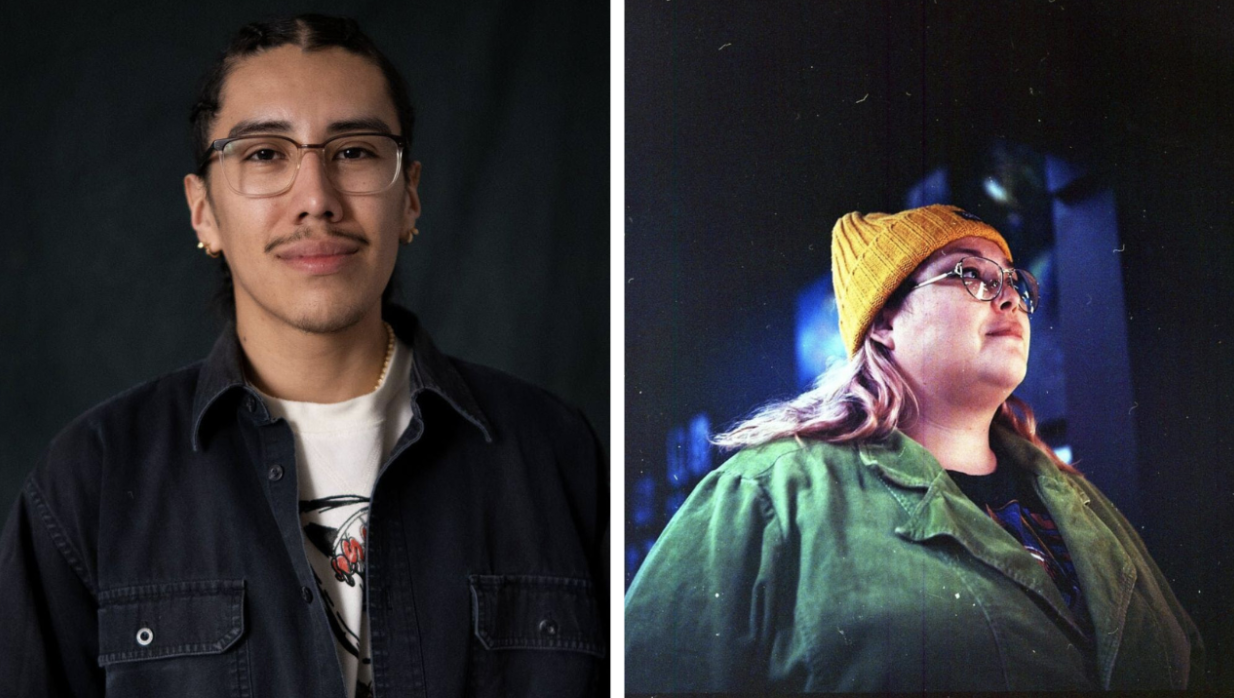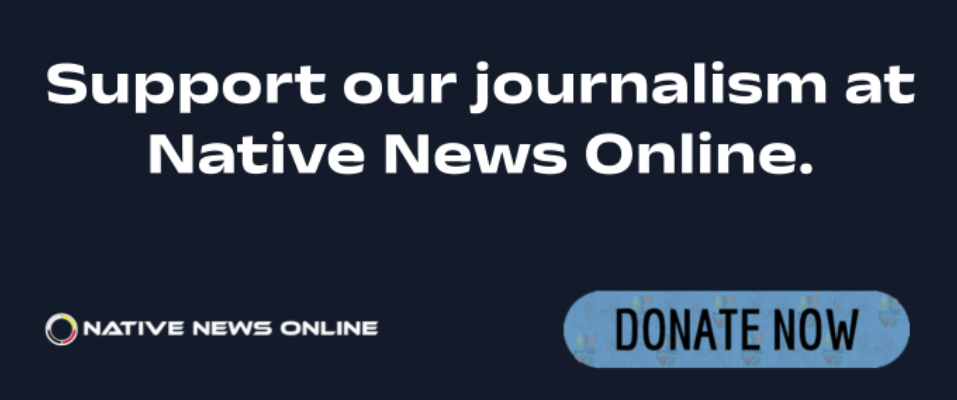
- Details
- By Native News Online Staff
Two students making waves in Indigenous art and filmmaking were honored this week as winners of the 2025 Tribal College Journal (TCJ) Student Art and Film Contest.
Odo Ishkiin, a full-time student at the Institute of American Indian Arts in Santa Fe, took top honors in the cover art category. His piece, Sho-Ban Proud, will be featured on the cover of this year’s TCJ Student edition, which runs as an insert in the Tribal College Journal’s fall issue.
Originally from Portland and a member of the San Carlos Apache Tribe, Ishkiin’s heritage also connects to the Shoshone, Bannock, and Blackfeet tribes. His work merges traditional tribal symbolism with modern streetwear aesthetics, creating a bridge between ancestral narratives and contemporary expression.
His win came after a tough selection process, said Tribal College Journal editor Bradley Shreve, who noted the staff saw many standout works during the AIHEC Student Conference in Rapid City. Still, Ishkiin’s art emerged as a clear favorite.
In the film category, Melissa Trombley, a student at Blackfeet Community College in Browning, Montana, was recognized for her documentary Reconnecting with Our Ways.
The self-taught filmmaker’s project explores Blackfeet cultural practices, from hide tanning and archery to buffalo processing. Trombley, who returned to her community after time away, says the project reflects her personal journey of cultural reconnection and healing.
“My love for filmmaking started ages ago but resurfaced with a course at Blackfeet Community College,” Trombley said in a press release. “I want to keep telling stories through Indigenous eyes — in all kinds of genres.”
Trombley’s film will be showcased on tribalcollegejournal.org and she’ll also debut the work at the Pocahontas Reframed Film Festival in Richmond, Virginia, later this year.
The TCJ Student publication is part of Tribal College Journal, which serves as a creative outlet for students attending Tribal Colleges and Universities (TCUs) across the country.
These schools, 34 accredited institutions and three in development, play a vital role in offering culturally relevant higher education opportunities to more than 100,000 Native students and community members annually.
More Stories Like This
Hanging a Red Dress for Christmas: MMIP, Native Higher Education, and Hope for a Better New YearNative Students Can Win $5,000 Scholarship, International Distribution in Pendleton Design Contest
American Indian College Fund Raises Alarm Over Plan to Shift Native Programs Away From the Dept. of Education
MacKenzie Scott Foundation Gives $5 Million Contribution to Little Priest Tribal College
Tribal Leaders Push Back on Dismantling of U.S. Department of Education
Help us defend tribal sovereignty.
At Native News Online, our mission is rooted in telling the stories that strengthen sovereignty and uplift Indigenous voices — not just at year’s end, but every single day.
Because of your generosity last year, we were able to keep our reporters on the ground in tribal communities, at national gatherings and in the halls of Congress — covering the issues that matter most to Indian Country: sovereignty, culture, education, health and economic opportunity.
That support sustained us through a tough year in 2025. Now, as we look to the year ahead, we need your help right now to ensure warrior journalism remains strong — reporting that defends tribal sovereignty, amplifies Native truth, and holds power accountable.
 The stakes couldn't be higher. Your support keeps Native voices heard, Native stories told and Native sovereignty defended.
The stakes couldn't be higher. Your support keeps Native voices heard, Native stories told and Native sovereignty defended.
Stand with Warrior Journalism today.
Levi Rickert (Potawatomi), Editor & Publisher


